What Are Jerk Skewers? Your Guide to Authentic Caribbean Flavor
Jerk skewers are a delicious Caribbean specialty that combines bold, spicy jerk seasoning with perfectly grilled meat or vegetables on skewers. Originating from Jamaica, jerk cooking uses a unique blend of spices including allspice, Scotch bonnet peppers, thyme, garlic, and ginger to create a fiery yet balanced flavor profile. When properly prepared, jerk skewers deliver an authentic taste of the islands right in your own backyard.
This complete guide covers everything you need to know to make perfect jerk skewers, including a detailed recipe, common mistakes to avoid, and essential tools for grilling success. Whether you're a beginner or experienced grill master, these tips will help you create jerk skewers that impress every time.
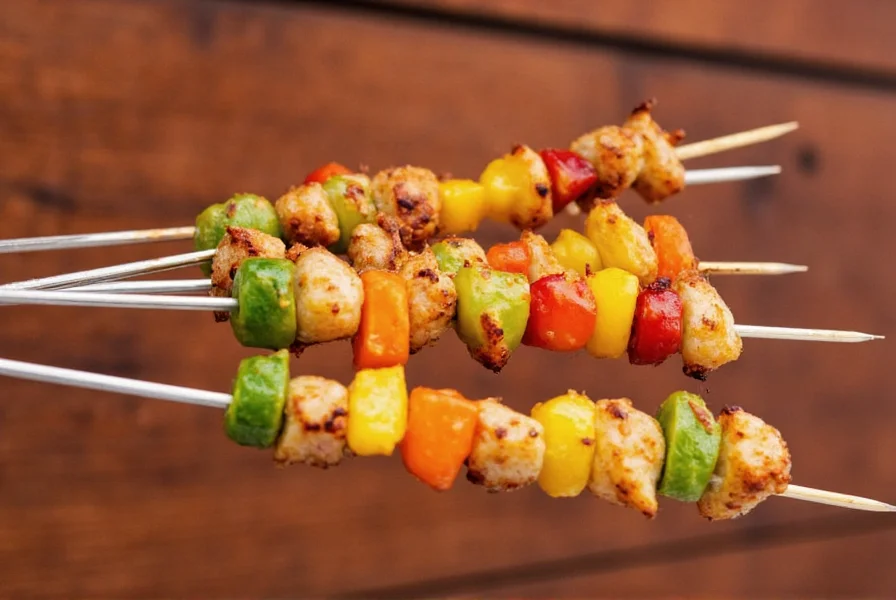
Classic Jerk Skewers Recipe
Ingredients
- 1.5 lbs chicken thighs (boneless, skinless) or pork shoulder (cut into 1-inch cubes)
- 1/2 cup jerk marinade (recipe below)
- 1 red bell pepper (cut into 1-inch pieces)
- 1 yellow bell pepper (cut into 1-inch pieces)
- 1 medium red onion (cut into 1-inch pieces)
- 1 cup mushrooms (whole or halved)
- 2 tbsp olive oil
- Salt to taste
Jerk Marinade Recipe
- 1/4 cup soy sauce
- 2 tbsp brown sugar
- 2 tbsp lime juice
- 2 tbsp olive oil
- 3 garlic cloves (minced)
- 1 tbsp fresh ginger (grated)
- 1 tbsp ground allspice
- 1 tsp dried thyme
- 1/2 tsp ground cinnamon
- 1/4 tsp nutmeg
- 1-2 Scotch bonnet peppers (seeded and minced, adjust for heat preference)
- 1/4 cup chopped fresh cilantro
Instructions
- In a bowl, combine all marinade ingredients and mix well
- Add chicken or pork to the marinade, cover, and refrigerate for at least 4 hours (overnight is best)
- Soak wooden skewers in water for 30 minutes to prevent burning
- Thread marinated meat and vegetables onto skewers, alternating ingredients for even cooking
- Preheat grill to medium-high heat (375-400°F)
- Grill skewers for 10-12 minutes, turning occasionally, until meat reaches 165°F for chicken or 145°F for pork
- Brush with extra jerk glaze during the last 2-3 minutes of cooking
- Let rest for 5 minutes before serving
Mistake #1: Using Too Much Spice Without Balance
Okay, so you love spice. We get it. But jerk seasoning isn't just about heat—it's about harmony. If you overload your marinade with only chili and black pepper, you're missing out on the full flavor profile that makes jerk special.
The Problem:
- Too much heat drowns out other flavors.
- You risk overpowering delicate ingredients like veggies or fish.
The Fix:
- Use whole allspice berries (also known as pimento) for that classic jerk backbone.
- Add citrus zest or juice to brighten things up.
- Don't skip the thyme, garlic, and onion in your marinade.
| Spice | Flavor Contribution | Tip |
|---|---|---|
| Allspice | Smoky, warm, peppery | Rub it into the meat thoroughly |
| Scotch Bonnet | Fiery heat + fruity undertone | Use gloves when handling |
| Thyme | Herbaceous depth | Fresh is better than dried |
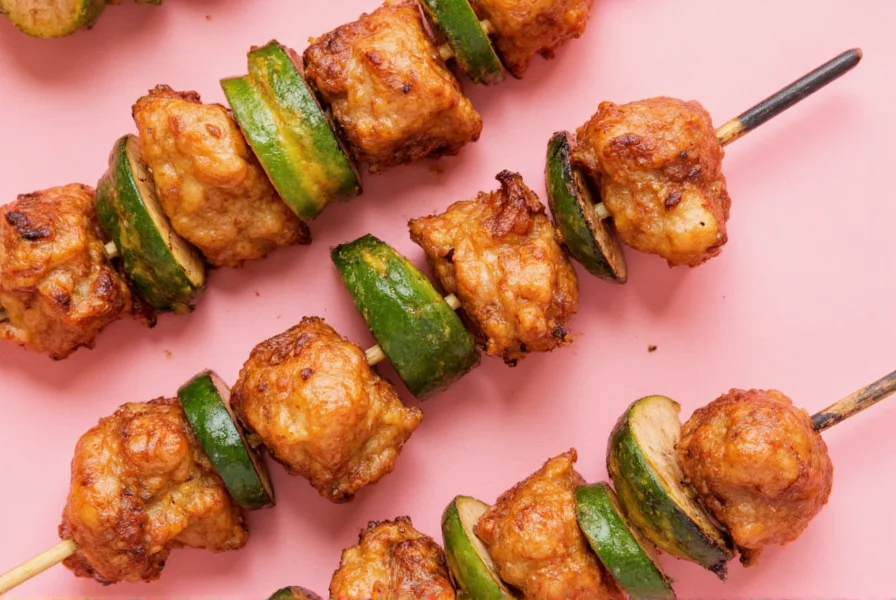
Mistake #2: Choosing the Wrong Meat or Veggie
Jerk skewers work best with meats that can stand up to bold seasoning and high heat. But not every cut—or veggie—is created equal.
The Problem:
- Lean cuts dry out too fast on the grill.
- Tough vegetables char instead of caramelizing.
The Fix:
- Chicken thighs = your new best friend (juicy, flavorful).
- Pork butt or shoulder = rich, tender after slow searing.
- Veggies: Try bell peppers, zucchini, mushrooms, and red onions.
| Protein/Veggie | Texture | Best Cut/Type |
|---|---|---|
| Chicken | Tender but needs fat | Thighs or drumsticks |
| Pork | Firm and fatty | Shoulder or belly |
| Veggies | Softens on grill | Bell peppers, mushrooms, zucchini |
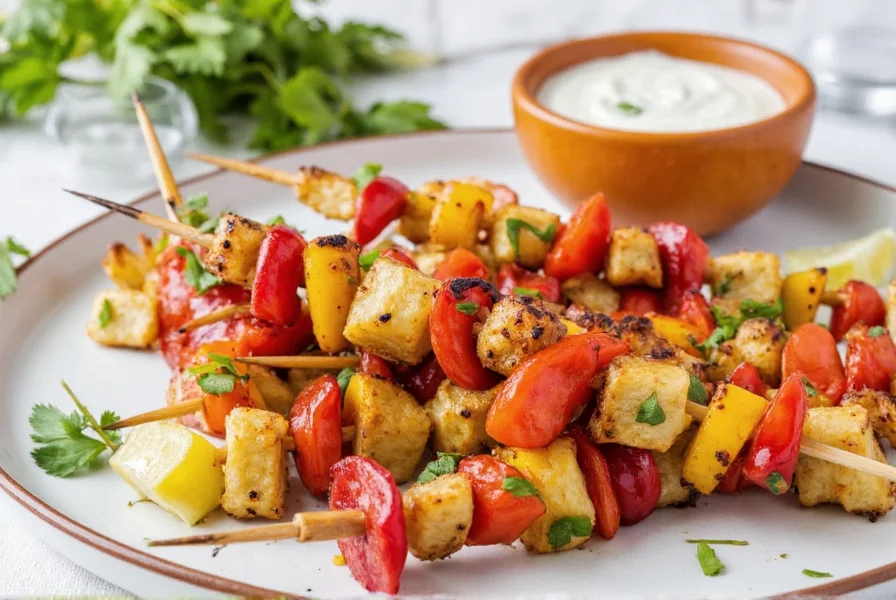
Mistake #3: Not Marinating Long Enough
Marination is where jerk skewers earn their soul. Rush this step, and you'll end up with bland bites that scream "I tried."
The Problem:
- Only surface-level flavor penetration.
- Seasoning burns off during cooking.
The Fix:
- Marinate for at least 4 hours (preferably overnight).
- Use a ziplock bag or airtight container to keep things sealed tight.
- Massage the meat regularly to help absorption.
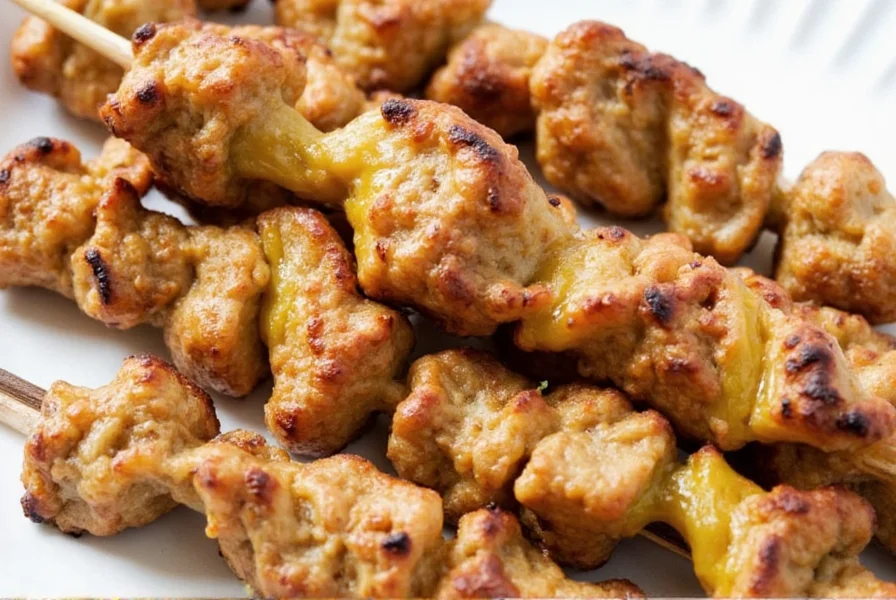
Mistake #4: Skewering Everything Like a Rookie
Skewer arrangement is underrated—but crucial. Uneven sizes mean uneven cooking. And no one wants half-charred onions next to perfectly grilled shrimp.
The Problem:
- Ingredients cook at different rates.
- Hard to eat if everything falls off the stick.
The Fix:
- Cut everything into similar-sized cubes or slices.
- Alternate between meat and veggies to prevent sticking.
- If using wooden skewers, soak them in water for 30 minutes to avoid burning.
| Solution | Benefit |
|---|---|
| Soak wood skewers | Prevents burning |
| Alternate items | Better heat distribution |
| Uniform size | Even cooking |
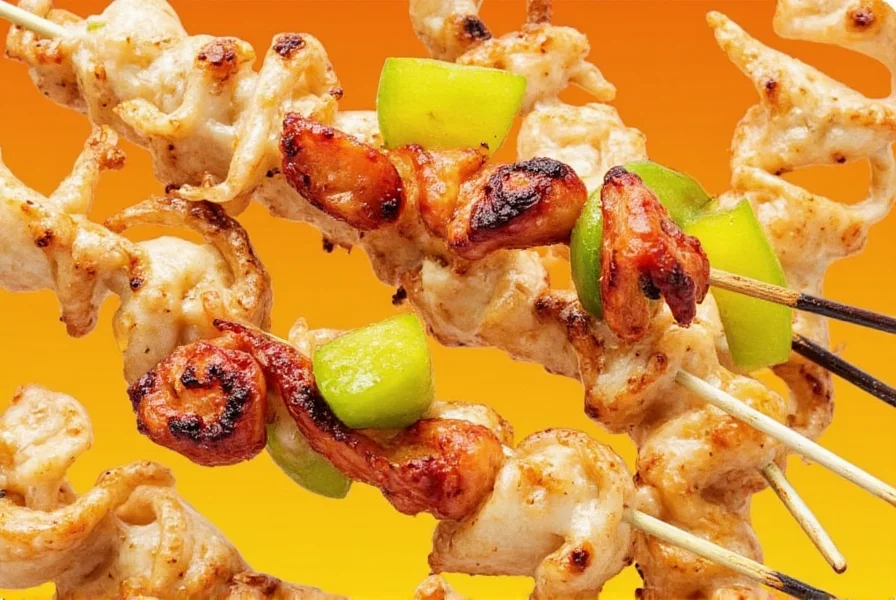
Mistake #5: Forgetting the Sauce at the End
Yes, the marinade does most of the heavy lifting. But brushing on a little extra sauce at the end of grilling gives jerk skewers that extra punch of flavor—and shine.
The Problem:
- No final flavor boost.
- Dry-looking presentation.
The Fix:
- Make extra jerk glaze or sauce.
- Brush it on in the last 2–3 minutes of grilling.
- Avoid sugary sauces early—they'll burn quickly.
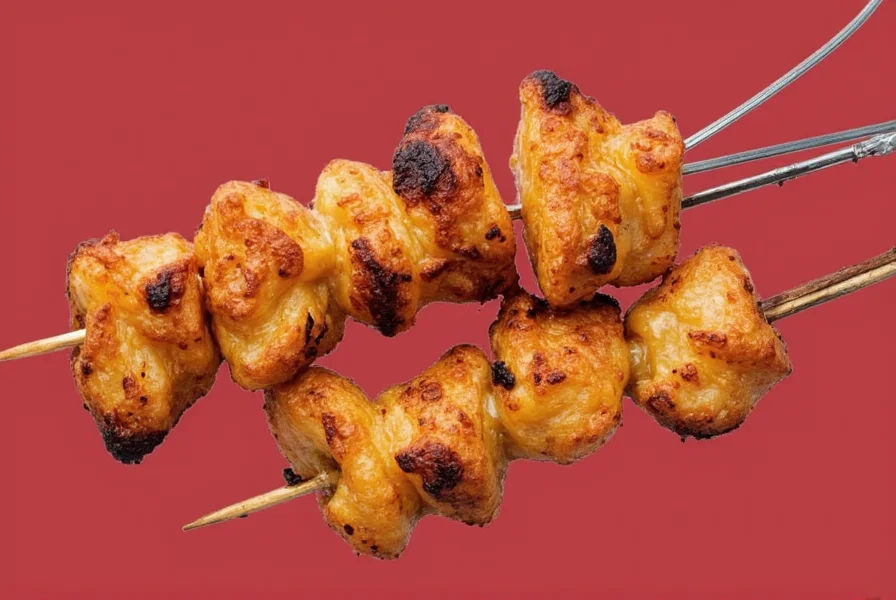
FAQ: Your Jerk Skewer Questions Answered
How long should I marinate jerk skewers for best results?
For optimal flavor, marinate jerk skewers for at least 4 hours, but preferably overnight. This allows the flavors to fully penetrate the meat rather than just coating the surface. If you're short on time, don't go below 2 hours, but you'll notice a significant difference in flavor depth with longer marination.
Can I use chicken breast for jerk skewers or should I stick to thighs?
While you can use chicken breast, we strongly recommend chicken thighs instead. Chicken breasts are leaner and tend to dry out quickly on the grill, resulting in tough, rubbery meat. Chicken thighs have more fat content which keeps them juicy and flavorful when exposed to high heat. If you must use breast, cut it into smaller pieces and watch the cooking time carefully.
How can I reduce the heat of jerk seasoning if I don't like it too spicy?
To reduce heat while maintaining authentic flavor, decrease the amount of scotch bonnet peppers and increase other components like allspice, thyme, and citrus. You can also add a touch of honey or brown sugar to balance the heat. Remember that jerk is supposed to have some heat, but it should be balanced with other flavors - it's not just about being spicy.
Can I make jerk skewers in the oven if I don't have a grill?
Yes! While traditional jerk cooking uses open flames, you can achieve good results in the oven. Use the broiler setting for that charred effect, or roast at 400°F (200°C) for 15-20 minutes, turning halfway through. For best results, finish under the broiler for 1-2 minutes to get that grilled appearance. A cast iron grill pan (as mentioned in our buying guide) also works well indoors.
How do I know when jerk skewers are fully cooked?
For chicken, use a meat thermometer to check that the internal temperature reaches 165°F (74°C). Pork should reach 145°F (63°C) with a 3-minute rest. The meat should no longer be pink, and juices should run clear. Shrimp will turn opaque and pink. Remember that jerk seasoning can make visual cues harder to read, so a thermometer is your best friend.
Buying Guide: The Best Tools and Ingredients for Jerk Skewers
To make your jerk skewers the talk of the town, here's what you need to buy:
Top Spices & Seasonings
- Whole Allspice Berries – Essential for authentic Jamaican flavor. Grind them fresh for maximum impact.
- Scotch Bonnet Peppers – The backbone of jerk's fire. Handle with care!
- Caribbean-Style Jerk Seasoning (Premixed) – A time-saver that still packs flavor. Look for brands with minimal fillers.
Essential Tools
| Product | Description | Best For |
|---|---|---|
| Stainless Steel Skewers | Reusable, durable, and don't burn like wood. | Regular grillers who hate broken sticks. |
| Cast Iron Grill Pan | Perfect for indoor jerk skewer lovers. | Urban apartments or rainy days. |
| Meat Thermometer | Ensures perfect doneness without guessing. | Poultry lovers who fear undercooked chicken. |
Recommended Brands
- Walkerswood Caribbean Foods – Authentic jerk seasoning blends straight from Jamaica.
- SteelCraft Stainless Skewers – No more soaking or tossing wooden ones.
- Weber Smokey Mountain Cooker – Perfect for smoking jerk skewers with hardwood chunks.
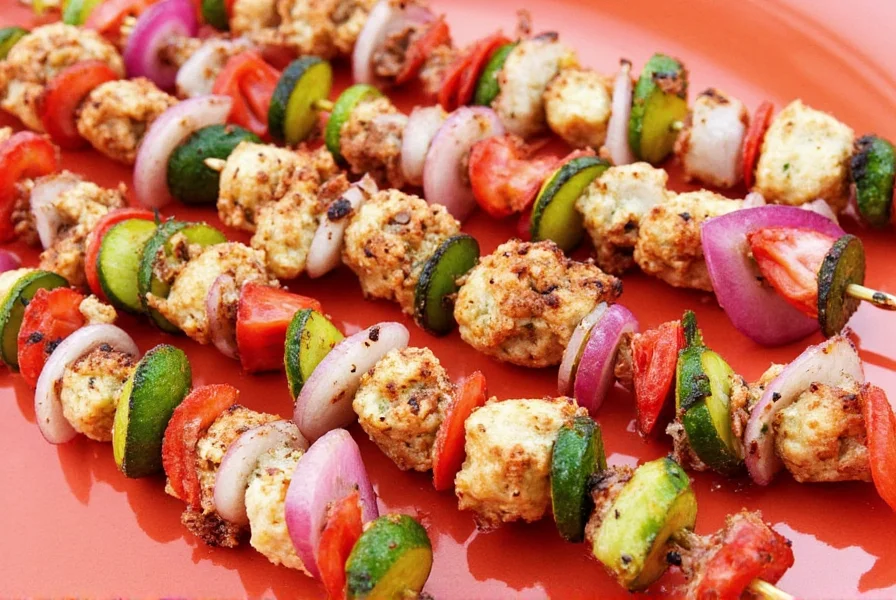
Conclusion: Master Your Jerk Skewers Like a Pro
Now that you have the complete recipe and know how to avoid common mistakes, you're ready to fire up the grill like a true culinary artist. Remember: balance the heat, choose your proteins wisely, marinate like a pro, skewer smartly, and always finish with flair.
With the right tools and techniques, your jerk skewers won't just impress—they'll transport your guests straight to the beaches of the Caribbean. So go ahead, grab those skewers, crank up the tunes, and enjoy the smoky, spicy magic you're about to create!
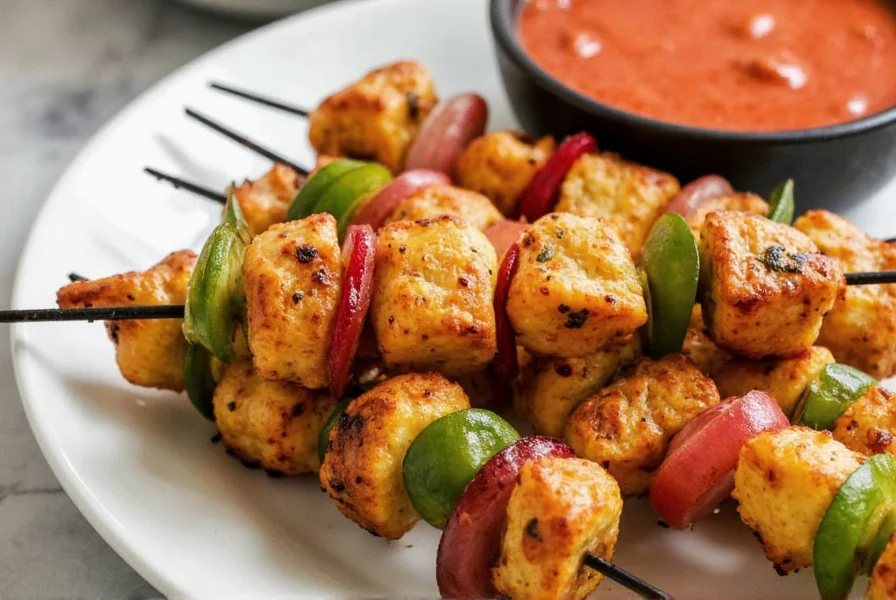
Table of Contents
- Introduction: What Are Jerk Skewers?
- Jerk Skewers Recipe
- Mistake #1: Using Too Much Spice Without Balance
- Mistake #2: Choosing the Wrong Meat or Veggie
- Mistake #3: Not Marinating Long Enough
- Mistake #4: Skewering Everything Like a Rookie
- Mistake #5: Forgetting the Sauce at the End
- FAQ: Your Jerk Skewer Questions Answered
- Buying Guide: The Best Tools and Ingredients
- Conclusion: Master Your Jerk Skewers Like a Pro

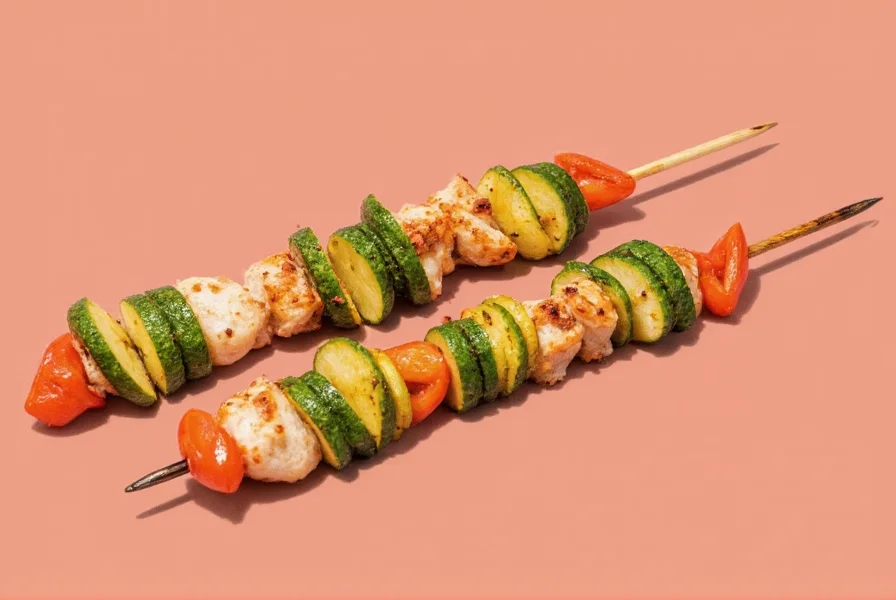









 浙公网安备
33010002000092号
浙公网安备
33010002000092号 浙B2-20120091-4
浙B2-20120091-4